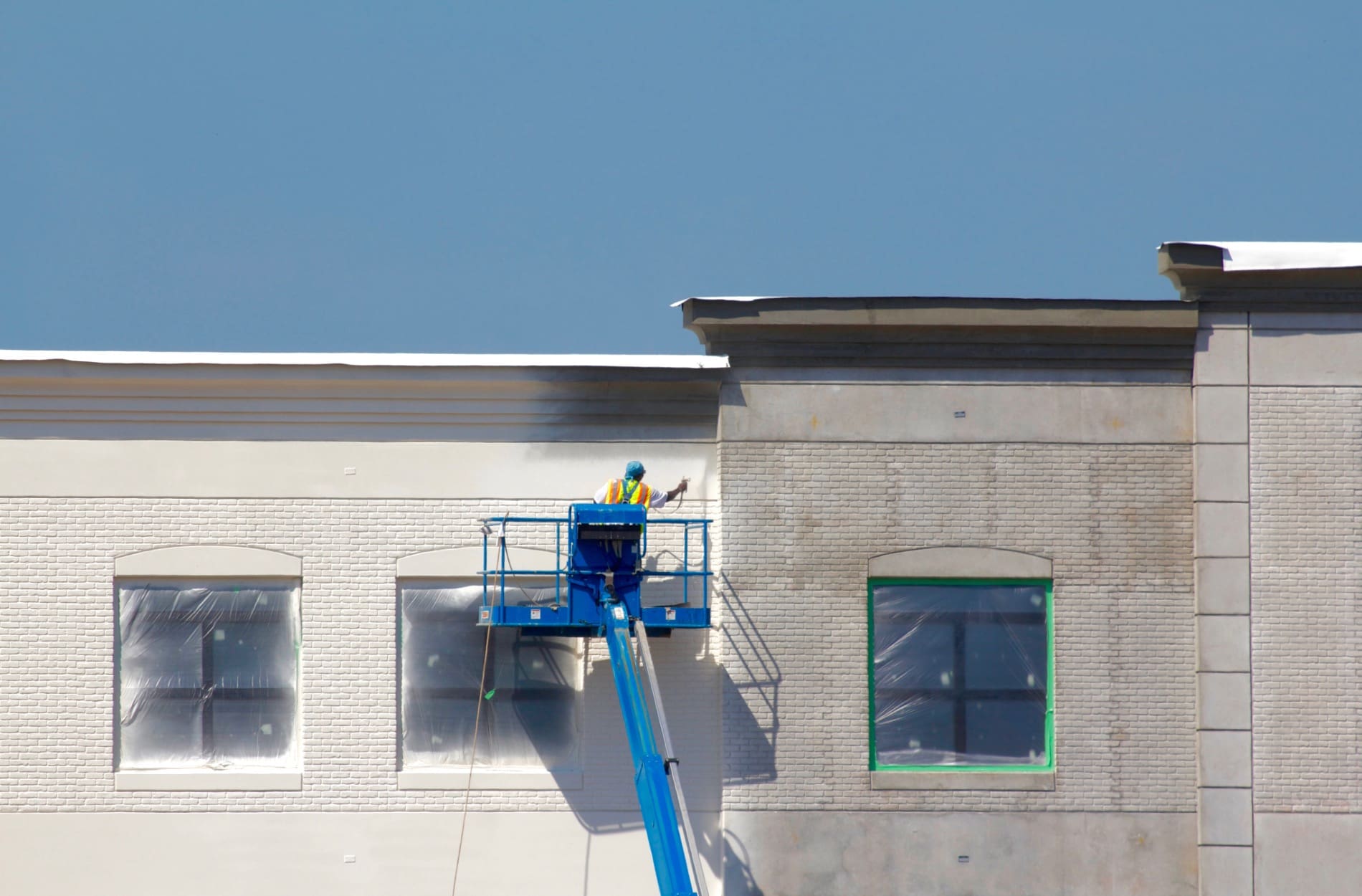Common Questions About Commercial Painting Answered

Commercial painting is an essential aspect of maintaining and enhancing business properties. It goes beyond simply applying a fresh coat of paint; it involves a strategic approach to color selection, surface preparation, and durable finishing techniques. Whether it’s a retail store, office building, or industrial facility, commercial painting plays a vital role in creating a welcoming and professional environment for customers and employees alike.
Understanding the importance and intricacies of commercial painting can help you make informed decisions for your business property. For instance, knowing how to choose the right painting contractor can save you time and money while ensuring a high-quality result. Additionally, having realistic expectations about the painting process can help you prepare adequately and minimize disruptions to your daily operations.
Regular maintenance, including timely repainting, is crucial for preserving the aesthetic appeal and structural integrity of your property. Different environments and usage levels can influence how often a repaint is necessary. By addressing common questions about commercial painting, we aim to provide valuable insights that will help you keep your business looking its best. This guide covers essential topics to ensure you have all the information needed to maintain your commercial property efficiently.
What Is Commercial Painting and Why Is It Important?
Commercial painting involves painting projects for businesses and commercial properties. These projects can include office buildings, retail stores, warehouses, and other large-scale properties. Unlike residential painting, commercial painting often requires different techniques, materials, and equipment to handle the size and complexity of the job.
One of the main reasons commercial painting is essential is its impact on a property’s appearance. A fresh coat of paint can make a business look professional and inviting. This can attract customers and clients, creating a positive first impression. Furthermore, commercial painting can protect the building from wear and tear. High-quality paints and finishes help shield surfaces from weather elements, moisture, and other potential damages.
Commercial painting also contributes to a business’s branding efforts. The right color scheme and well-maintained exterior can reinforce brand identity and make the business stand out. Investing in regular painting maintenance can save businesses money in the long run by preventing costly repairs and extending the life of their property. Overall, commercial painting is crucial for both aesthetic and functional reasons, ensuring that business properties remain attractive and durable.
How Do I Choose the Right Commercial Painting Contractor?
Choosing the right commercial painting contractor is a vital step to ensure the success of your painting project. Start by looking for contractors with a strong reputation. Check reviews and testimonials from previous clients to get a sense of their work quality and reliability. Word-of-mouth recommendations can also be helpful.
Experience matters when selecting a contractor. Look for companies with extensive experience in commercial painting, especially in projects similar to yours. Experienced contractors are more likely to deliver high-quality work and handle any challenges that arise. Ask to see examples of their previous work to gauge their expertise and style.
Another important factor is communication. A good contractor should be responsive and willing to answer all your questions. They should provide a detailed estimate outlining the scope of work, materials to be used, and timeline. This transparency helps prevent misunderstandings and ensures you know exactly what to expect.
Don’t forget to check their credentials. Make sure the contractor is licensed and insured. This protects you from liability in case of accidents or damage during the project. Finally, compare quotes from multiple contractors to find one that offers a fair price without compromising on quality. Taking these steps will help you choose a commercial painting contractor who meets your needs and delivers excellent results.
What Should I Expect During a Commercial Painting Project?
Understanding what to expect during a commercial painting project can help you prepare and minimize disruptions. The process typically begins with a detailed assessment and planning phase. The contractor will inspect the property, discuss your needs, and provide an estimate. This phase is crucial for setting clear expectations regarding the timeline, costs, and scope of work.
Once the project begins, surface preparation is the first step. This might involve cleaning, sanding, and repairing any damaged areas. Proper preparation ensures the paint adheres well and provides a durable finish. Depending on the size of the property, this phase can take several days.
When painting starts, the contractor will apply primer followed by the chosen paint. They will likely use specialized equipment to ensure an even application. If the project involves multiple coats, each layer needs time to dry before the next one is applied. Keeping safety in mind, the contractor will follow protocols to protect your employees, customers, and the property itself.
After the painting is complete, the contractor will walk you through the finished work. This final inspection is your chance to point out any areas of concern or request touch-ups. By understanding these steps, you can ensure a smooth and efficient commercial painting experience.
How Often Should Commercial Properties Be Repainted?
Repainting frequency depends on several factors, including the type of business, the building’s exposure to the elements, and the quality of the previous paint job. On average, commercial properties need a fresh coat of paint every 3-7 years. High-traffic areas or buildings exposed to harsh weather conditions might require more frequent touch-ups.
For exterior surfaces, consider repainting every 3-5 years to protect against weather damage and maintain curb appeal. Buildings that face direct sunlight might experience fading and wear faster than those in shaded areas. Regular inspections can help identify early signs of paint deterioration, allowing you to address issues before they escalate.
Interior spaces typically need repainting every 5-7 years, although this can vary depending on use. High-traffic areas like hallways, restrooms, and lobbies might show wear and tear sooner. Keeping your interior paint fresh not only looks good but also maintains a clean and welcoming environment for employees and customers.
In addition to these general guidelines, regular maintenance can extend the life of your paint job. Clean surfaces periodically and address minor repairs promptly to keep your property looking its best. By staying proactive with repainting schedules, you ensure that your business always makes a positive impression.
Conclusion
Commercial painting plays a crucial role in maintaining and enhancing your business property. From selecting the right contractor to understanding the painting process and keeping up with maintenance schedules, being informed can save you time and money. Proper planning and regular upkeep help ensure that your property remains attractive and in good condition, which is good for your business’s image and longevity.
Knowing how often to repaint and what to expect during a project prepares you for a smoother experience. Regular inspections and timely touch-ups can prevent bigger problems down the line, preserving both the aesthetic and functional aspects of your building.
For all your commercial painting needs, contact Paint Boss GA. Our commercial paint contractors provide high-quality painting services that will keep your business property looking fresh and professional. Reach out to us today to get started on your next project!

